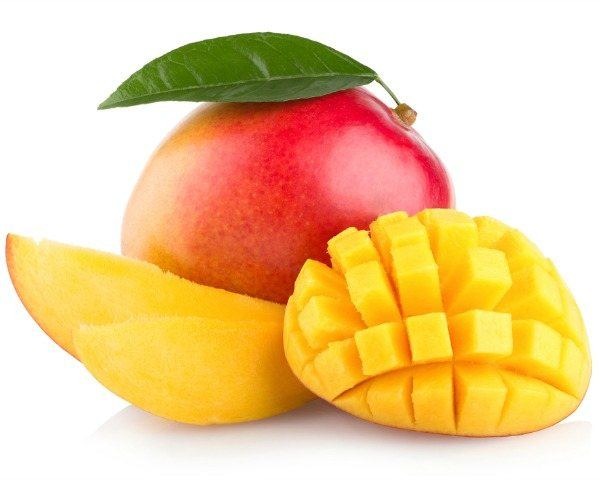Diane's Dish On... Mangos
Mango is a tropical super fruit that originated in India. Mangos are in a family of fruit-bearing trees that includes cashews and pistachios. The mango is considered a drupe due to the edible flesh surrounding an inedible pit — similar to olives, cherries, and peaches. They are protected by a smooth outer skin and have an orange-yellow flesh with a sweet flavor. Mango season is from April to August.
Nutrition Noshes
- Mango is an excellent source of carotenoids, a type of vitamin A that provides cancer-fighting antioxidants and supports healthy vision, skin and immunity.
- Mangos are high in vitamin C, potassium, and vitamin B6.
- Mangos are high in fiber and act as a pre-biotic, which promotes the formation of healthy bacteria on the intestines.
- The antioxidants found in mangos can protect against certain types of cancers.
- Mangos are heart-healthy and can help lower blood pressure and protect against stroke and heart disease.
- Mangos are also brain-healthy — the B6 found in mangos promotes proper nerve function that manages mood and sleep function.
- Soluble and insoluble fiber are both found in mangos, making them excellent for fighting high cholesterol, diabetes, and heart disease, as well as promoting weight management.
- The enzymes found in mangos can help protect against indigestion and keep the skin healthy by opening clogged pores to fight off acne.
Culinary Corner:
- Unripe mangos have green skin that will turn yellow or orange-red when ripe.
- A few tricks to cutting a mango:
- Using a chef knife, make four cuts around the center pit. Remove the skin either by peeling back the skin and removing the flesh, or by sliding a knife between the skin and flesh. Slice or chop as desired.
- For a beautiful presentation, cut the fruit length-wise into three pieces on either side of the seed to make two halves. Using a paring knife, score the flesh horizontally, then vertically, careful not to cut through skin. Invert the half by pushing the skin inward to present mango cubes.
- Don't get rid of the pit right away! The sweetest part of the mango is around the pit, so enjoy the flesh around it.
- Mangos can be enjoyed alone because of their sweet flavor.
- Add sliced or chopped mangos to salads, oatmeal, cereal, yogurt, or pancakes.
- Create a sweet and spicy salsa by mixing diced mango with red onion, tomato, jalapeno, cilantro, and lime juice. Enjoy with chips, fresh veggies, fish, pork, chicken, or tacos.
- Blend mangos and place into ice cube trays and freeze for a frozen treat.
- Create a mango purée that can be used in place of syrup for breakfast foods, in yogurt, or on ice cream.
- Add mango cubes to kebobs for added sweetness.
- Instead of jelly, make a PB & Mango sandwich for your next lunch.
- Make a healthy dessert at your next BBQ by grilling mango slices.
Fun Facts
- Mango is called "King of the Fruits"
- Mangos are the most popular fruit in the world.
- The paisley pattern is based on the shape of a mango.
- In some cultures, giving someone a basket of mangos is a gesture of friendship.
- Legend has is Buddha frequently meditated under mango trees due to the tranquility he found there.
- In India, the mango tree is a symbol of love and is believed to grant wishes.
Click here to see Diane's Crock Maple-Mango BBQ Sauce
Diane Henderiks is a personal chef and culinary nutritionist on a mission to teach America how to cook and eat well. Follow her on Twitter @dhenderiks, "Like" Diane on Facebook, or visit her website.
